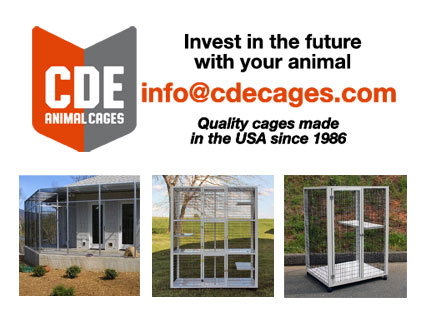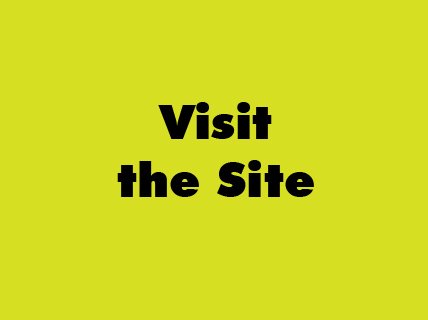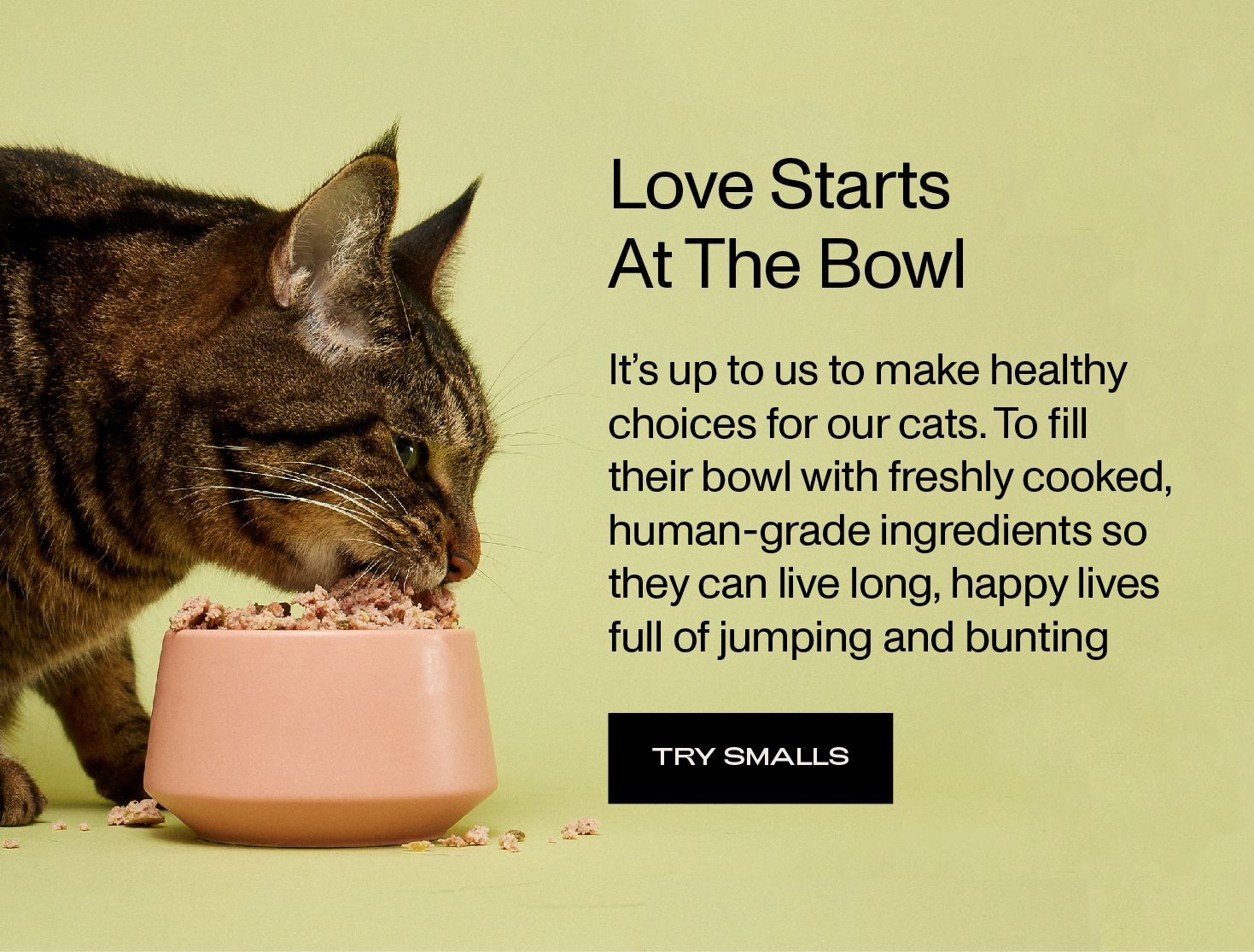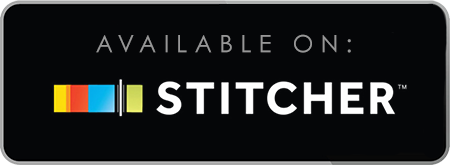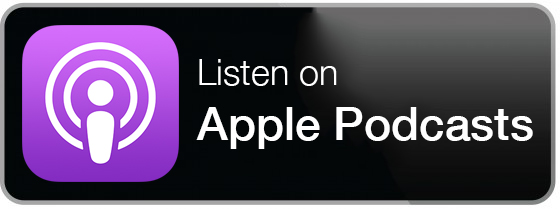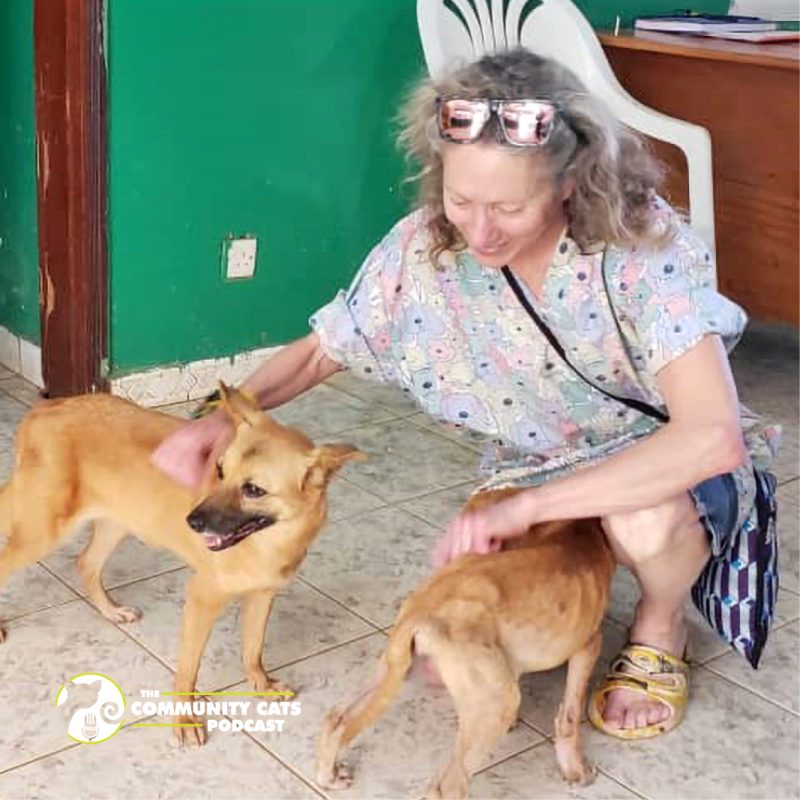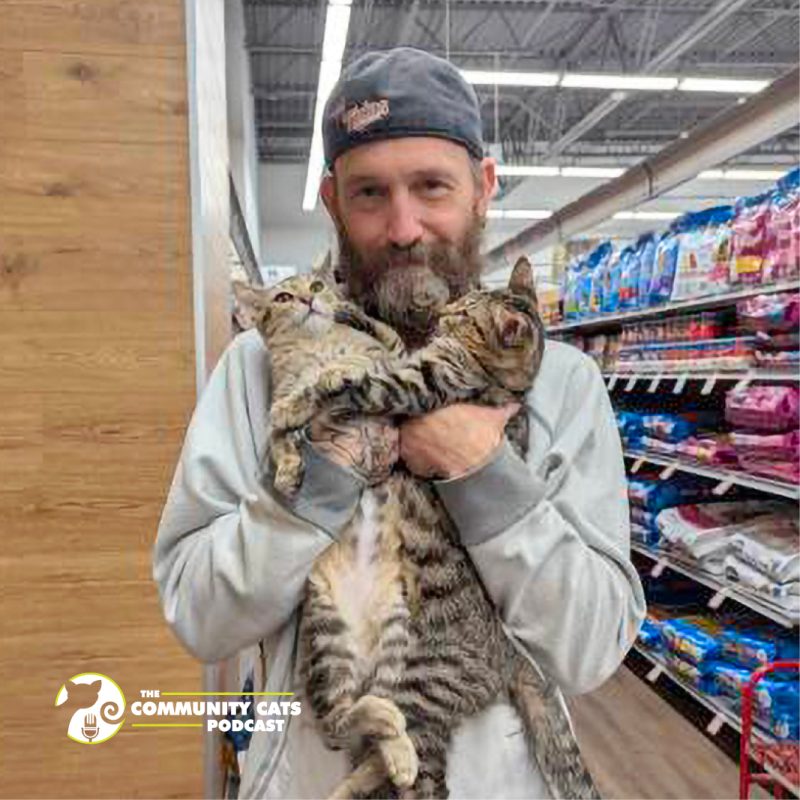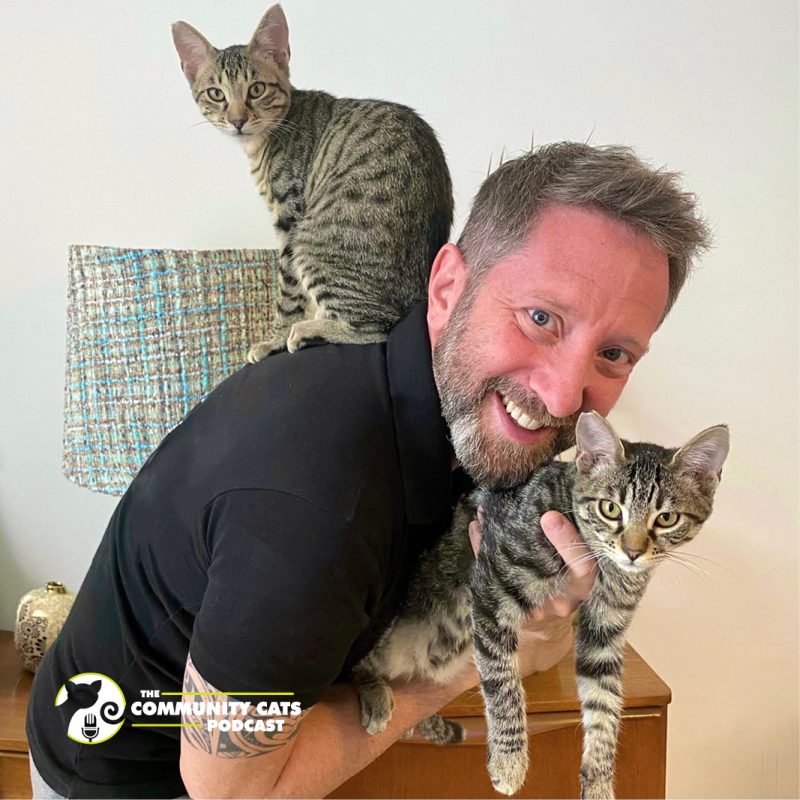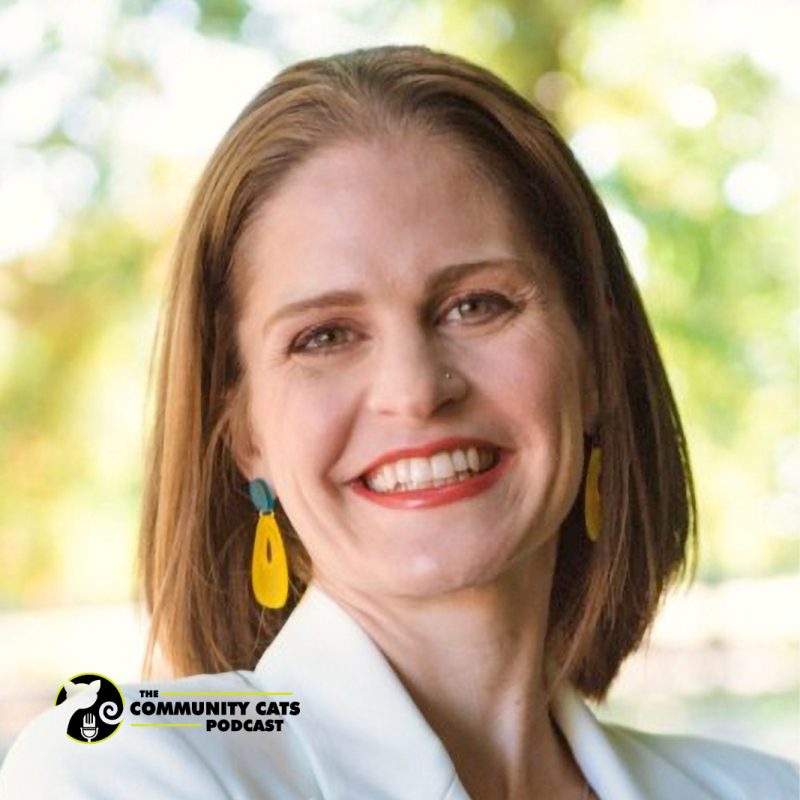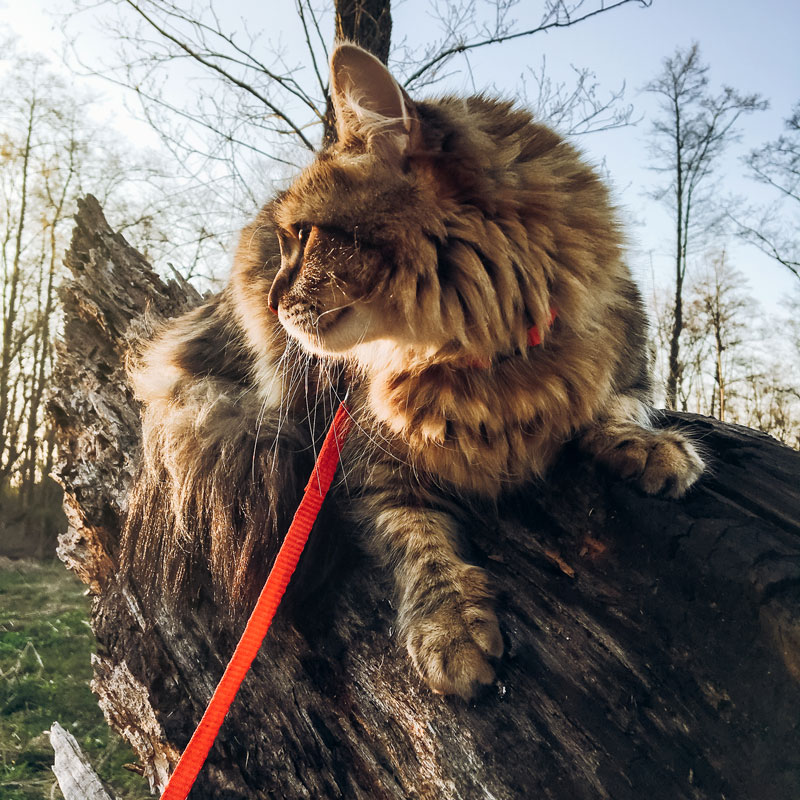
Adventure Cats
July 1, 2021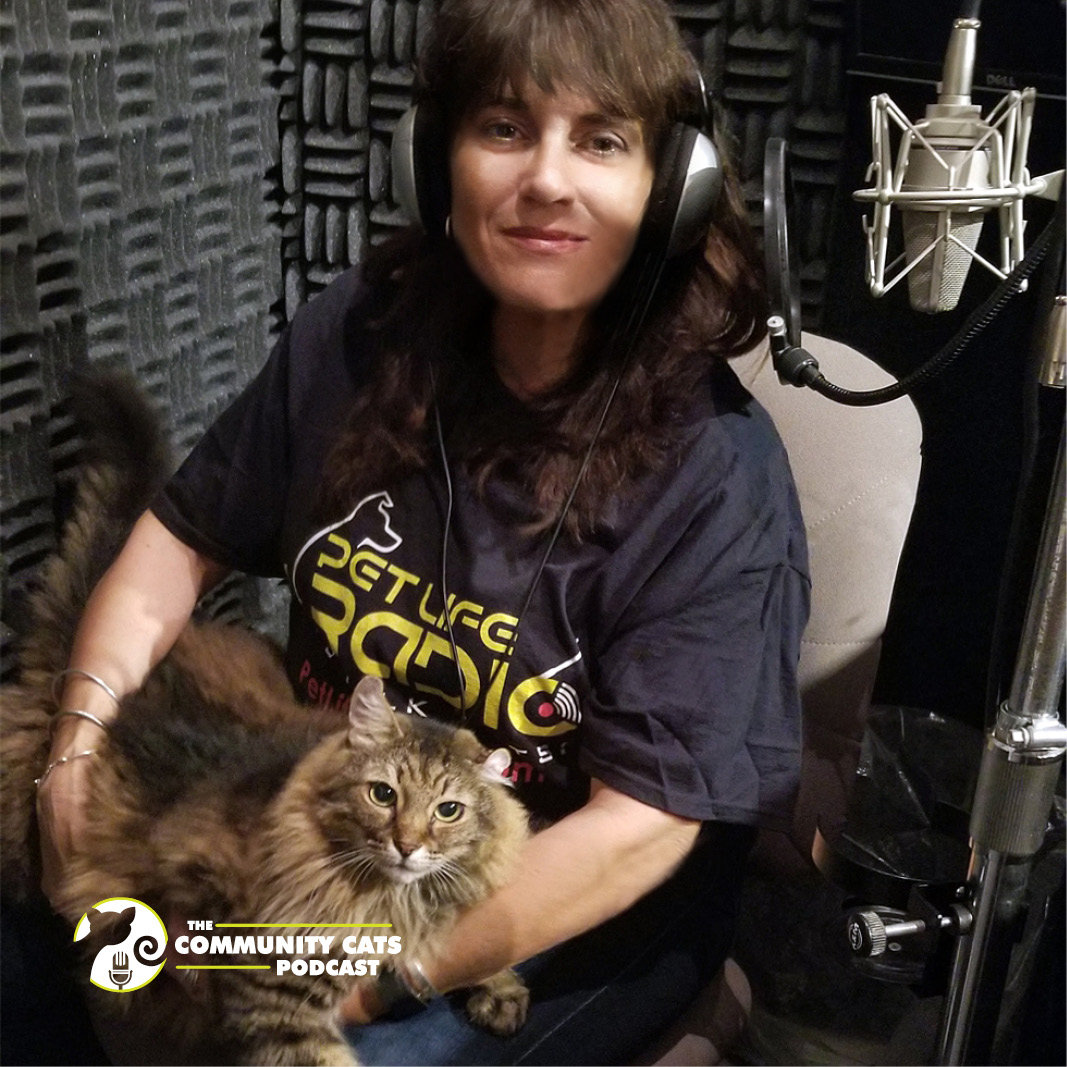
Michelle Fern, Host of Podcast Cattitude
July 13, 2021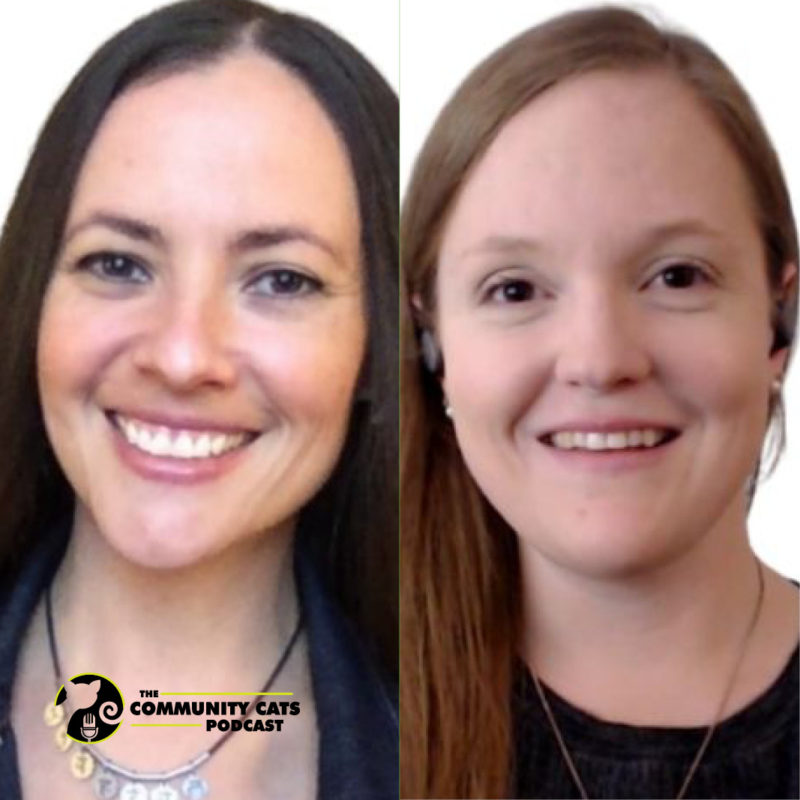
“We really want to reach the pet lover in a way that inspires them to think differently.”
Listen to Episode #411 Now
This episode is sponsored in part by Smalls Fresh Cat Food and Doobert.com.
This week Stacy interviews Chloe DiVita and Jessica Shipman, co-founders of All Pet Voices, a pet-focused media company that creates content for pet lovers in partnership with pet experts and brands. Their mission is to collaborate with other pet industry experts and bring people together to inspire, innovate, and take ideas to the next level.
Stacy, Chloe, and Jessica discuss how they help small businesses and nonprofits share their story in a way that helps them connect with their audience, the best ways to grow that audience, and some of the best tech tools for staying organized.
You can find out more about All Pet Voices on their website and join their Facebook group BlogPaws Community for tools and resources for nonprofits and small businesses.
Read Episode #411 Now
CommunityCatsPodcast_Ep411_Divita_210706.mp3
https://www.communitycatspodcast.com/episode-411-chloe-divita-jessica-shipman/
Full Transcript:
Kristen Petrie [00:00:02]
You've tuned in to the community cats podcast. Ready? Let's go.
Stacy LeBaron [00:00:13]
Welcome to the Community Cats Podcast. I am your host, Stacy LeBaron. I've been involved in helping homeless cats for over 20 years with the Merrimack River Feline Rescue Society. The goal of this podcast is to expose you to amazing people who are improving the lives of cats. I hope these interviews will help you learn how you can turn your passion for cats into action? And today, we're speaking with Chloe DiVita and Jessica Shipman, who are the co-founders of All Pet Voices. Welcome to the show.
Chloe DiVita [00:00:41]
Thank you.
Jessica Shipman [00:00:42]
Thank you.
Stacy LeBaron [00:00:43]
So, Chloe, would you be willing to just share a little bit with our listeners about your background?
Chloe DiVita [00:00:48]
Absolutely. Many in the pet world may know me from BlogPaws as one of the original executive team members, and I was there for about 10 years and then recently, Jessica and I co-founded All Pet Voices together. We still have the BlogPaws community and BlogPaws was known for having its conferences and giving back to the pet space, we had over $125,000 in donations, $50,000 in products. Probably more than that, but it's hard to quantify everything that we did through there. And we very much embrace that in All Pet Voices and trying to give back, collaborate, bring light, and make sure the right information is getting to the right people. We kind of prefer video format, so that's been something we’ve been focusing on.
Stacy LeBaron [00:01:32]
And Jessica. What about you?
Jessica Shipman [00:01:33]
So I have a little bit of a different path. I started in pet blogging when I adopted my first dog as an adult and dove into learning about the whole world beyond just what it was having a dog at home. I had grown up with rescue pets, dogs and cats, and it was just a really interesting experience, and it allowed me to combine my love of technology…I'm actually by trade an engineer, a computer scientist, web developer ‒ whatever you want to call me ‒ and that, really, it propelled me into this world that allowed me to learn more about nonprofits, rescue, what it was. Because at that point, I really just knew about the side of adopting. So that's kind of my background, and then I moved to Colorado, where Chloe lives and we obviously furthered our friendship through what we had had in the BlogPaws community, and then she was like, ‘hey, I have this great idea about All Pet Voices’. And I was like that sounds awesome ‒ let’s do it! And we started a business in 2020, and that was an adventure.
Stacy LeBaron [00:02:37]
So, tell me a little bit about All Pet Voices. What exactly is it? And what are your hopes with the business?
Chloe DiVita [00:02:43]
All Pet Voices, our whole mission, is to collaborate with other pet industry experts and bring people together to inspire and innovate and take ideas to the next level, in essence creating content with other people, right? It's not just about us. We really want to reach the pet lover in a way that inspires them to think differently because there's so much content out there in the pet space about many different kinds of pets that isn't good. It's not great quality content, and we wanted to bring the people together that really are trying to make a difference. And so we have coffee chats every Thursday. It's a podcast-type show, but it's a Facebook Live. But similar to this we want to just introduce people: people who are making a difference to pets, pet lovers. We also have the All Pet Collaborative, which is more of bringing what BlogPaws was and teaching pet influencers, into the space of working with small pet businesses. So, whether you have a product or a service, or you are a blogger or an influencer, everyone has similar struggles and we have so much experience from pet industry to marketing, to video to digital media, we wanted to create a space where people could come together and learn how to grow their networks, grow their following, grow their reach, align their businesses, and meet others that they could collaborate with. I think if we can succeed in bringing together not only pet industry professionals, but even pet lovers being inspired by what we're creating in a way that benefits pets everywhere, then we're winning.
Stacy LeBaron [00:04:10]
What are those challenges that you're seeing, Jessica, as you meet new people that are joining the group? What are the key challenges that you find most people have?
Jessica Shipman [00:04:20]
So, I think the two biggest things that I'm seeing is (1) how do I convey my story? How do I share my message, share my passion, share my ‘why’? This is such a heart-driven space. We love our animals. We love helping animals. How do I share that? How do I put that out into the world and also share it in a way so that people are connecting back? And I think that builds onto the second problem, which is more, I would say, in the true business-sense-of-things: how do I reach more people? How do I get more engagement? How do how does my message spread far and wide? And I think those are very closely related, but I think those are the two biggest questions and challenges that we’re seeing from our community members.
Stacy LeBaron [00:05:02]
So, Chlo, what are the answers to those questions?
Chloe DiVita [00:05:07]
Oh, how I wish we all had answers to every question! When it comes to heart-driven business, I don't know anyone in the pet industry‒ especially the small businesses‒ who isn't driven by their passion, who isn't driven by their love, I think the answer to part of it is truly getting down to what your ‘why?’ is. We tend to all have a very surface ‘why?’. I love animals. I love cats. I want to help cats everywhere. That is true for everyone who takes that step, but usually your story and what truly drives you is much deeper, and I think one of the answers is getting down to what that is because that's the piece that's unique about all of us. And so, when you hear people talking about authenticity and all those buzzwords, it's more just about your truth, right? The only way to be authentic is to be true to where you came from, who you are, and why you care, which is usually much deeper than just, ‘I love cats’. And so one of the answers is digging down to that piece because once you have that piece, it's a lot easier to understand how to then take that message and put it out into the world.
But even that takes some translating and some knowledge around which pieces and when, because some people have very, very personal details involved in their ‘why?’ and they don't necessarily want to share it all. So then they struggle with ‘I don't want to, like, reveal my whole emotional background, but I want people to understand how I connect’. And so, one of the solutions is finding the pieces that people connect with, without making the person feel like they have to reveal everything.
Stacy LeBaron [00:06:32]
So I'm going to do a little working session here and practice with both of you. And I'm going to share my ‘why’ and see what you think. So, well, actually, I have to say, I have two ‘whys’. So, two really big moments in my career that made me feel like I wanted to help folks turn their passion for cats into action was I had one scenario where I went to this bar that had a few cats in the back that needed help and some of them were sick. It turned out it was a dumpster full of kittens that all had runny, goopy eyes and a colony of about 50 adult cats. You can see them in the woods. There was an apartment complex in the back behind the bar and you can see the adult cats in the woods and the kittens were all amongst beer bottles in this dumpster, kind of. So, it was a glass and kitten combination with a lot of eye problems. We rescued about 30 kittens out of that dumpster, everyone either lost one or two eyes in that process, all got adopted, all found happy, wonderful, loving homes. All of the adults in the woods got TNR-ed and we had a dedicated feeder there. But for me, my why was: I went and I saw this and I knew, I knew this existed someplace else. I knew this vision - this picture - existed in another place. And I didn't want this to happen in other places. So, my ‘why’ was, how do I take this story here and be able to help others to prevent this from happening anywhere else? And basically, I went to the person who owned the bars and said no, no. No, no, this is just not happening again. We're just not doing this again. And so there was my one of my big ‘whys’, you know. Another big ‘why’ for me was a situation where, in the mid 90s, we had some foster kittens go into the veterinarian's office and they had been bottle baby kittens that had latched onto a mom. We found a mom and the bottle baby kittens went and so the mom took them on along with her own kittens. And those kittens tested positive for feline leukemia and they were euthanized without any questions by the veterinarian. I wasn't aware enough, aware of the organization - I had just started running it - so was really new, and I was, like, wait a minute, why did this happen? And the mom was destined to be euthanized because she had tested negative beforehand, but then she took the kittens and then she tested positive after that. And I said no we're going to adopt her out. She worked to save the lives of these kittens and her own kittens. And we started our feline leukemia adoption program back in the 90s when many organizations weren't looking to adopt out feline leukemia-positive cats. And so it was this one – Nala, was the cat - I adopted her out to a seven-year-old girl and her mom. She was the sweetest cat and I said to them, I said ‘you realize she might only live, you know four, five years or whatever - is this okay? Your daughter's going to experience, could experience, a loss?’ And she goes ‘they have such a wonderful bond’, that it's the bond that’s what's most important for the cat and for her daughter, whether the time is short or whether it's long. It's okay. It's the bond that's what's most important, not the fact that she has a disease. So, those are my two big ‘whys’ that have helped create me, to be where I am. Choosing those stories I think is really important. And I found it's really hard to know. How do you choose those stories to be able to amplify that and then share with others? You know, those are two that resonated with me. But, I don't know, sometimes I feel like there's a story every day.
Chloe DiVita [00:10:04]
Indeed, there is, there are stories everywhere. Those are two amazing stories and I think in both of them, what I would say to you is, what was it about what you did that made you feel like something needed to change? What was that piece?
Stacy LeBaron [00:10:17]
So, the part that I did was I needed to problem solve the situation in such a way so that then I was choosing to spend resources in a way that we hadn't normally done. So we were prioritizing, picking a priority differently and launching a different type of program, having to have a really hard conversation with our veterinarian about why it's important, why you can adopt out a feline leukemia-positive cat, rather than just choosing to euthanize. So, I mean, it's quality of life. I really want to improve the quality of life for cats all across the board and create a humane community for cats. I think it kicked me into problem-solving mode. I'm a problem solver. So, as I said, I saw something, I didn't like it and I wanted to change it. What were the things that I had to bring to the organization in order to create that change that was institutionalized, that would continue going forward? Does that help answer your question?
Chloe DiVita [00:11:14]
Yeah, and what you explained in there is that problem solving mode, right? Because that's what we see a lot. And a lot of our ‘whys’, there's a problem we see and we came up with a solution. And it was that journey that becomes part of the why, but in the end, it's also thinking about what changed for the cats, in this case, because of what you did? What shifted? What was the difference in the end for the cats because of what you did? That's a question for you.
Stacy LeBaron [00:11:41]
Well, the cats, obviously, they were all spayed and neutered and vaccinated. Eventually, the colony aged out. There are no cats behind that bar. There are no kittens with eye problems, or any kittens at all. And so, not only is it helping the cats and the kittens there, but it's helping the community and understanding how to be responsible about the cats in their care. Many of the cats sourced from the apartment complex. So, we did outreach on our catmobile program for spay/neuter. So that folks are getting their cats spayed and neutered before they're letting their cats out, or before the cat starts spraying. So, yeah, there's this whole, like, human support component of it, too. Not only are we helping the cats, but we're helping the guardians of the cats, too. Jessica, what do you think about my story?
Jessica Shipman [00:12:33]
I would say, first and foremost, you have that emotional connection. You're conveying that super well. I felt like I was there, I could see, I could visualize, these kittens that needed help. I think that that gets your attention, that gets your audience's attention. It causes people to then be like, okay, well, what's next? So then what do you do? You know, further asking those questions. So I think that those stories are great stories. The one thing that I will say is that they are two different experiences and I think they might actually be ‘why’ components for different parts. You do a thousand things. So, they might actually be like, one ‘why’ is for one thing that you do. And you might have a different ‘why’ for something else that you're doing. And so many of us, we have different facets of our businesses, of our lives. And it's okay to have a ‘why’ that's different for business A versus business B. And so, that's one of the things I was hearing, you have two ‘whys’, but it's not necessarily that those ‘whys’ are directly correlated to everything that you do. But the story of rescuing the kittens behind the bar, educating the bar owners, TNR-ing the adult cats - that is a whole world itself. And then, also the world about educating that cats can be adopted even if they aren't perfect, imperfect cats are actually the best cats. That's one of the things that I really heard from hearing those two sides of your ‘why’.
--Start mid-roll advertising--
Stacy LeBaron [00:14:08]
Give your feline friend protein-packed meals they'll crave with Smalls. Smalls is fresh human-grade food for cats delivered right to your doorstep, so you, too, can embrace your inner house cat. All cats are obligate carnivores. They need fresh, protein-packed meals. Conventional cat food is made with profits in mind, using low-quality, cheap meat byproducts, grains and starches coated in artificial flavors. Smalls, on the other paw, is made with cats in mind. Smalls develops complete and balanced recipes for all life stages with leading cat nutritionists. Starting with human-grade ingredients like you or I would find at the market, Smalls’ recipes are gently cooked to lock in protein, vitamins, minerals and moisture. No room for fillers, no need for flavoring. Better quality ingredients mean a better, healthier life for your cat. Since switching to Smalls, cats have experienced improved digestion and a less-smelly litter box, softer and shinier coats plus better breath. Try Smalls today for your cats in your household. Hooch loved it.
Kristen Petrie [00:15:09]
Use offer code ‘communitycats’, at checkout for total of thirty percent off your first order at Smalls.com.
Stacy LeBaron [00:15:16]
Are you ready to be part of the solution for feral and stray cats in your neighborhood? If so, then make sure to sign up for our next to Neighborhood Cats TNR certification workshop. A new workshop is held online each month, generally on the first Saturday of the month, but please check our website for exact dates. For just $10, expert instructors will teach you best practices for trap, neuter and return: TNR. Learn what TNR is, and why it works. We’ll cover getting along with neighbors, preparations for trapping, trapping itself, including entire colonies at once, feeding, providing winter shelter and more. Take advantage of the interactive format, extensive handouts, and video footage of actual projects. Attendees will receive a certificate of attendance and gain access to an ongoing Facebook group for networking with other TNR activists. The two-and-a-half hour workshop is led by Susan Richmond, the executive director of Neighborhood Cats and Brian Kortis, Neighborhood Cats National Programs Director. To find out the date of the next workshop and sign up, just visit communitycatspodcast.com.
Stacy LeBaron [00:16:18]
As we emerge from the global pandemic of Covid, fostering is emerging as the ‘new normal’ in the animal welfare industry. But shelter management software doesn't provide the tools or the workflows for communicating with fosters at scale, so many organizations struggle to maintain hundreds of animals in foster homes. If only there were a system that was custom built, specifically, to solve this problem? Introducing FosterSpace, powered by our friends at Doobert. FosterSpace was custom built to allow you to manage hundreds of foster relationships and to communicate with them via text, email, and even Facebook Messenger. Your fosters have a portal where they can upload videos and photos and updates on their animals, and organizations can schedule fosters for meet-and-greets, adoption days or anything else they need. There's so much more to check out. Sign up for free at www.doobert.com, and go to the FosterSpace tab to get started.
--End mid-roll advertising—
Stacy LeBaron [00:17:12]
So, let's say I have these stories and I want to share these stories. What are the best channels for getting the word out that are most successful for us, if you are a small organization or limited in time or whatever? If you had to pick two or three channels, Chlo, what would you advise someone to do to be able to get the biggest bang for your time and your buck, getting the word out?
Chloe DiVita [00:17:38]
The thing about picking channels and deciding where to focus your time is that you want to be in the places where the people who are going to take that action - you mentioned you want to drive people to action - where they exist. That can be different for different businesses. I think in the case of animal rescue, there is a big focus on Facebook and I think it's valid. I think there's a lot of people, generationally speaking, that are more involved when they get a little bit older. Not to say there's no young people in it at all, but Facebook tends to be a little bit more, you know, Millennial/GenX and on up. There you have more opportunity to do things like creating a group, right? And bringing people together in a different way. So, when you think about Facebook, it's not just Facebook. It's: do I have a Facebook page? Do I have a Facebook group? Am I using my personal profile? There's some of those decisions that need to happen as well, but I would also say email. That's less of a channel and more of a list - but it's yours. One of the things that can run into businesses, can run into nonprofits, specifically, is you're using platforms that you don't own. Facebook - I don't think it's going anywhere per se, but how it's used, and the way it changes and algorithms - that's always going to be changing, right? You don't have any control over it. It's just going to happen to you. Same thing with Instagram. Same thing with Twitter. Same thing with LinkedIn. All of those platforms are free services for you to use so that they can keep changing things up. Hopefully, you know - they've got their own business goals - but you as a non-profit, if you can grow your community, which you can do through an email list - you can do it through a Facebook group, as well - but I think email becomes a way that nobody can take that from you, right? Somebody opts in, somebody gives you their information, they're interested, they're now a person that you can connect with directly. You don't need Facebook, you don't need those other platforms that are owned by other people. So, I would definitely recommend - if it's not a part of a plan yet or you're not growing a list - to make that a focus because it's yours.
Stacy LeBaron [00:19:32]
Jessica, do you have anything else you'd like to add to that?
Jessica Shipman [00:19:35]
I definitely agree with email being the top place to look. The one thing I would add is that email can seem a little bit overwhelming. There are all these tools and all these different options and facets of it. And the one thing I would say is there are so many email tools out there that actually have a free base: you can sign up, you don't have to…there's no cost. And it actually would make your life a lot easier to use these free tools rather than just trying to send a newsletter through your Gmail account or whatever you're currently using. And it gives you gives you a lot more information in terms of analytics and tracking. So you can see if people are opening your emails, what they're clicking on, you know, so then you can start viewing it from that marketing perspective of what's doing well. Are the photos of our adoptable kittens really getting the most opens and clicks? If so, you maybe you want to send a few more emails about that. And you can see maybe what doesn't do well, as well. So that would be the one thing I would recommend: look at emails tools, and it doesn't have to be a paid one, there are some great, free options out there.
Chloe DiVita [00:20:40]
Well, one thing I'll add is I don't want to discount Instagram just because Facebook and email are so important. Instagram, I mean, think about all the kittens - those pictures do really well. So, Instagram being that focus of the visual as long as you've got people who can take good photos, then Instagram is a really great place to just get attention. I don't know that the results you're going to get on Instagram are going to be quite the same as what you might get via email, or Facebook, but it’s possible. And that exposure, that awareness, can really get built up there just from the great imagery.
Jessica Shipman [00:21:16]
The one thing I would just follow up with is that on Instagram it's a little bit harder to build that community interaction, just because of the way that the platform works, but I will say that if you're already taking amazing photos of adorable kittens, you should go and leverage that and get that up on Instagram and share these beauties with the world. Also, that will help you grow your reach, in general.
Stacy LeBaron [00:21:37]
We hear the term influencer a lot. I'm trying to think of, in terms of building your mailing list and that kind of thing, we do have video out there now, you know, would it be wise for us to do community outreach on video? Become the community cat expert, you know, in our area, as a way to build the list? I mean, as everybody knows, I've got the gift of the gab, but there might be other people out there who are willing to say ‘what to do if you have a cat in your backyard’ and you want to know whether its owned or not owned, ‘here are ten minutes’ tips to success’ or something like that, and get people to sign up for that? Or Facebook live or something, or on Zoom, or something like that. Is that a good way to do list building? You talked about using video - is that something we should think about doing?
Chloe DiVita [00:22:21]
Indeed! Video is great for list building in the sense that you get people to opt into a thing. Or if you just start a YouTube channel, but part of it is telling them how they can follow you more, telling them where to sign up, telling them - giving them the direction. I will say: don't ever be afraid of telling people what you want them to do. Because everybody wants to be told what to do when it comes to landing on something and being unsure. And you have to remember that most people who find your stuff are new to you, are wondering – they have questions. They don't land there with answers, they land there with questions. And so the more you can guide them and tell them what to do: ‘watch this video, then sign up for this’, ‘take this step’…sometimes for us when we're creating that kind of content it can feel a little prescriptive but really for the new people who find you, if that's what they need…and video’s a great way to show your personality. And that's a big piece when we get back to talking about authenticity and truth, that comes through in video. And so people learn to connect with you as a person, and then they're even more interested in what you're doing. So an aspect not to be overlooked is that ability - even if you feel awkward! People do not judge those they see on video the way the people in the video will often judge themselves. It's the quirks and it's the little things. It's the time you got awkward or you didn't know what to say that become endearing to people and become relatable. So don't be afraid of video.
Jessica Shipman [00:23:45]
I will also add that based on the examples that, Stacy, you gave, it also helps show your expertise and especially in the nonprofit world, there are so many things that you become experts at. Whether that's bottle feeding kittens, or events, adoption events, or just the logistics. There are so many things that you're actually experts at and you may not realize it, but somebody else who may want to do something similar could benefit from that. Or it just helps, you know, you share with your community that this is what we're doing, this is how involved we are. We're a legitimate business. We are working hard to save all these cats’ lives. I think that's another benefit that that type of video can definitely convey.
Stacy LeBaron [00:24:29]
So Jess, I’m going to ask you to put your tech hat on right now and ask you, what's your favorite toolkit of tech? Whether it's hardware or software, do you have project management tools that you use a lot or is there anything for, you know, scheduling your social media posts? Are there any tools out there that you would recommend folks take a look at?
Jessica Shipman [00:24:55]
Yeah, so if you are a very organized person or need to be an organized person, Chloe and I use Airtable all the time. It's a super fancy spreadsheet, but it allows you to view the information in a bunch of different ways, sort things in a way that an Excel spreadsheet could never. So I definitely recommend checking that out. It is free to start. We also love using Calendly, which is something that integrates with your calendars. So, if you're constantly having to set up meetings, you don't have to necessarily be emailing people to do that. You can just send them a link and say pick a time and I'll see you then. That's also a free tool to start. And if you have a team, we're also big fans of Slack in terms of a project management tool. There are some other great options out there. I also have experience with Asana, but I do like Slack in that it builds that community into it. It's much more of a forum and a discussion, and you can have fun with it but you can also be productive. And then, in terms of social media, there are so many different tools out there. I'm personally a fan of buffer. And again, part of the reason that I am a fan of buffer is because it does have that free start. That's one of the things I understand with nonprofits, small businesses, with influencers, having to pay $25 for every single tool you're using, that adds up really fast. So I tend to look for quality tools that have a free minimum that you can upgrade as you grow. Then in terms of video, we use several different tools, but I think one of our favorites is Streamyard for doing live videos because it allows you to do fun overlays and you can change up what you're viewing and share your screen - do all the fancy stuff that you would want. The downside of Streamyard is that it isn't free, but we think it's worth it.
Stacy LeBaron [00:26:41]
Chloe, anything else you'd like to share?
Chloe DiVita [00:26:42]
I think the only thing I'll add to that is something we use - and we use the paid version of this - but Canva is a really great tool for every business, nonprofits influencers, all of them because it really allows…it's probably the easiest tool in creating imagery, marketing materials, even videos. Now, if you do the pro version, that’s $10 a month, it's not super expensive, but it is a cost. That's what we use. And so if you ever see us share on social animated gifs and stuff, it's made in Canva. It's a really great tool to drag and drop and learn how to create nice marketing materials because they have an immense amount of templates. So you can just go in and be like, I need a marketing thing, and look at all the different options and pull one in, and then just tweak it and make it yours.
Jessica Shipman [00:27:28]
And in addition to that, they have a whole library of stock imagery that's included in their premium version. That's something that's a challenge, you know, if you don't have that perfect photo to match what you're talking about, it's a great tool for that.
Stacy LeBaron [00:27:40]
So I wanted to circle back to All Pet Voices. If someone was interested in signing up for the program - what does the program really involve? Chloe?
Chloe DiVita [00:27:51]
So All Pet Voices is amazing, come and follow us wherever you want, Facebook, and Instagram, all those places. We also have a paid membership that’s called the All Pet Collaborative and that is specifically for the small businesses who are - it could be a non-profit, we have we have nonprofits in there. We have product businesses, service businesses, pet bloggers, pet influencers, but it's really the person who’s a solopreneur or maybe they have BA or a real small team, but mostly, they're running their own business. It's to help them (1) find their why - we talk about that, how to incorporate stories, how to make your copy really pop. But in the end, it's really about growth and reach in the online world. This last quarter, we focused on email marketing – it’s probably one of the reasons I'm like ‘Email! Email!’. We did a lot and, in it, we get to learn along with everyone, some of the stuff that's taught, because we bring in guest speakers. Every month, there's a guest speaker who comes and shares their expertise and it's really meant for the people who are looking to take their business forward and really focus on it and make it a bigger priority and hopefully grow their reach.
Stacy LeBaron [00:28:57]
Anything else, Jessica, from your side?
Jessica Shipman [00:29:00]
I think just to add that – like Chlo mentioned - we have focused on email marketing but we have other plans for other content where, I guess…the next quarter we’ll be talking about video, Facebook, Instagram, and then even talking about more technical things like SEO. How to use tools like Google analytics - things like that. And we do really listen to what the members are dealing with, and what they're struggling with, what they want to learn about to craft what we're going to be focusing on in the next months and quarters to come. I will also add that every Thursday we do an AMA and although we have a theme for that AMA, it really is an Ask Me Anything. So if someone comes and even though the theme of the month or the week might be email and they're like ‘hey, I've been working on Instagram’, they have the opportunity to ask us for an hour on Thursday all their questions, if they want to.
Stacy LeBaron [00:29:55]
Yeah, and I've been to a couple of those and they're great and people are very actively posting, and it’s really nice to see that there. And a lot of the names are familiar, I mean, I see the same names, so you get to kind of know the group, which is nice. Well, is there anything else that you would like to share with our listeners today?
Chloe DiVita [00:30:13]
I will say for any nonprofits listening, people focused on foster, we do also have from our BlogPaws area of the business, a community in Facebook, called BlogPaws Community. It's a private Facebook group. And that is a free community, it's open to anyone who works within the pet industry. So, whatever you do in the pet industry, we don't really bring in the bigger brands, like we said, we're focused more on that small business, but people who foster, nonprofits - you're all welcome. In there we do talk about other things, too, like social media. This week, we're talking about Global Pet Expo in there, but every week, we have topics and people can ask questions. So it's just an open community to have a place to get answers and ask. So, I would invite anybody interested to find the BlogPaws community on Facebook.
Stacy LeBaron [00:31:01]
Jessica, what's the website? Is it allpetvoices.com? Is that the website?
Jessica Shipman [00:31:05]
It’s allpetvoices.com.
Stacy LeBaron [00:31:08]
Well, thank you both so much for joining me today on the show, and I hope we'll have you on again in the future.
Chloe DiVita [00:31:13]
Thanks, Stacy.
Jessica Shipman [00:31:14]
Thank you.
Stacy LeBaron [00:31:16]
That's it for this week. Please head over to Apple podcasts and leave a review. We love to hear what you think and a five-star review really helps others find the show. You can also join the conversation with listeners, cat caretakers, and me, on Facebook and Instagram and don't forget to hit follow or subscribe on Spotify, Apple podcasts, Google podcasts, YouTube, Stitcher or wherever you listen to podcasts so you don't miss a single show. Thanks for listening, and thank you for everything that you do to help create a safe and healthy world for cats.
Kristen Petrie [00:31:47]
The Community cats podcast would like to shout out a few of our online event sponsors. Did you attend the United Spay Alliance conference in March? The incredible content and educational opportunity were brought to you in part by Marian's Dream and Humane Network. If you or your organization would like to sponsor content that you care about and that saves feline lives, go to communitycatspodcast.com/sponsor and learn more about how you can turn your passion for cats into action.

